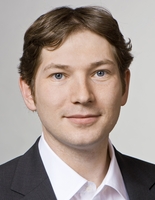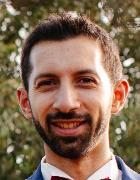Präzisionsmessungen bei extremen Bedingungen
Prof. Peter Fierlinger
Forschungsgebiet
Our research deals with experiments that should help to understand properties of the early Universe. We currently focus on the nature of the excess of matter versus antimatter. In most scenarios that describe this so-called baryogenesis, new sources of broken symmetries in the early Universe are required. Electric dipole moments (EDM) of fundamental quantum systems are interesting systems to investigate such new sources of CP (or T) violation in the baryon-sector, beyond the Standard Model of particle physics (SM). Experiments in this field are almost table-top scale, but are nevertheless probing physics at or beyond the reach of the LHC. Alternatively, the asymmetry of baryons could originate from an excess of leptons, which was then transferred to the baryons. Although most models that describe possible procedures for such a process are even further distant from direct experimental investigation, there could be an intriguing possibility to find a hint for such a phenomenon: the detection of neutrino-less double beta decay. Such an observation would (next to other fundamental consequences) show that neutrinos are Majorana-particles. This in turn would be an important feature for theories to generate symmetry breaking in the leptonic sector through the decay of a heavy partner of the light neutrino.
Mitarbeiterinnen und Mitarbeiter der Arbeitsgruppe
Professor
| Photo | Akad. Grad | Vorname | Nachname | Raum | Telefon | |
|---|---|---|---|---|---|---|

|
Prof. Dr. | Peter | Fierlinger | – | +49 176 72121737 |
Sekretariat
| Photo | Akad. Grad | Vorname | Nachname | Raum | Telefon | |
|---|---|---|---|---|---|---|

|
Sigrid | Weichs | 005 | +49 89 289-12434 |
Wissenschaftlerinnen und Wissenschaftler
| Photo | Akad. Grad | Vorname | Nachname | Raum | Telefon | |
|---|---|---|---|---|---|---|

|
Rodolphe | Combe-Colas | – | – | ||

|
Theo | Dutron | – | – | ||

|
Dr. | Florian | Kuchler | – | +49 89 289-53712 | |

|
B.Sc. | Lena | Wunderl | – | +49 89 289-53716 | |

|
Dr. | David | Wurm | – | +49 89 289-53712 |
Studierende
| Photo | Akad. Grad | Vorname | Nachname | Raum | Telefon | |
|---|---|---|---|---|---|---|

|
B.Sc. | Chiara | Brandenstein | – | +49 89 289-53712 | |

|
B.Sc. | Lucas | Hopf | – | +49 89 289-53714 | |

|
Niklas Benedikt | Kostelidis | – | – | ||

|
B.Sc. | Philipp | Rößner | 293 | +49 89 289-53716 | |

|
B.Sc. | Verena | Wallner | – | – | |
Andere Mitarbeiterinnen und Mitarbeiter
| Photo | Akad. Grad | Vorname | Nachname | Raum | Telefon | |
|---|---|---|---|---|---|---|

|
Estelle | Chanel | – | – | ||

|
Dr. | Hanno | Filter | – | +49 1627198766 | |

|
Vlad | Popescu | – | – | ||

|
Emily | Turner | – | – |
Lehrangebot der Arbeitsgruppe
Lehrveranstaltungen mit Beteiligung der Arbeitsgruppe
Abgeschlossene und laufende Abschlussarbeiten an der Arbeitsgruppe
- Aspects of the High Voltage and Leakage Current Measurement System of PanEDM
- Abschlussarbeit im Masterstudiengang Physik (Kern-, Teilchen- und Astrophysik)
- Themensteller(in): Peter Fierlinger
- Inbetriebnahme eines Caesium-Magnetometer-Arrays am PanEDM
- Abschlussarbeit im Bachelorstudiengang Physik
- Themensteller(in): Peter Fierlinger
- A Prototype for Rotational Calibration of a Direction-sensitive Magnetic Field Probe
- Abschlussarbeit im Bachelorstudiengang Physik
- Themensteller(in): Peter Fierlinger
- Towards Operation of a Drift Stable Cesium Magnetometer Array for the panEDM Experiment
- Abschlussarbeit im Masterstudiengang Physik (Kern-, Teilchen- und Astrophysik)
- Themensteller(in): Peter Fierlinger
- Towards an Electrostatic Storage Ring for Fundamental Physics Measurements
- Abschlussarbeit im Masterstudiengang Physik (Kern-, Teilchen- und Astrophysik)
- Themensteller(in): Peter Fierlinger
- Advanced in-situ field characterization for PanEDM
- Abschlussarbeit im Bachelorstudiengang Physik
- Themensteller(in): Peter Fierlinger